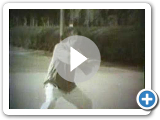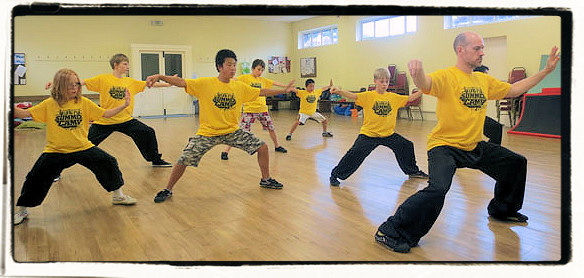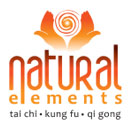Chen Style Tai Ji Quan
Be still as a mountain, move like a great river
Change, Balance, Realisation
Approximately 400 years ago in Chenjiagou Village, Wenxian County, Henan Province, China, 9th generation Chen family member Chen Wangting created the internal Martial Art of Chen Style Tai Chi (Taiji Quan - Ultimate fist/boxing). Using techniques and martial movements from the Ming General, Qi Jiguang's, Canon of Boxing, underpinned by the ancient philosophy of Yin and Yang and incorporating the Daoist methods of Daoyin (leading and guiding energy) and Tu-na (drawing and expelling energy) Chen Wangting formed the first training routines of Chen Style Tai Ji Quan. Over the following generations these routines were changed, developed and refined into the training methods that we have today.
 There have been many practitioners along the way that have been not only pivotal to the changes in Chen Style Tai Chi itself but also in it's historical evolution. 14th Chen family generation member Grandmaster Chen Changxing made one of those most well known changes after he decided to teach Yang Luchan, one of the household servants, when previously the family martial art had been kept a closely guarded secret for hundreds of years. This lead on to Yang Luchan founding Yang Style Tai Chi and eventually leaving the village to become a well known master practitioner in his own right. It was from here that teachings were passed down into other families, who created their own styles to give us the many types of Tai Chi that we see today.
There have been many practitioners along the way that have been not only pivotal to the changes in Chen Style Tai Chi itself but also in it's historical evolution. 14th Chen family generation member Grandmaster Chen Changxing made one of those most well known changes after he decided to teach Yang Luchan, one of the household servants, when previously the family martial art had been kept a closely guarded secret for hundreds of years. This lead on to Yang Luchan founding Yang Style Tai Chi and eventually leaving the village to become a well known master practitioner in his own right. It was from here that teachings were passed down into other families, who created their own styles to give us the many types of Tai Chi that we see today.
There are other stories of how Tai ji Quan began and it has been the debate of scholars for many, many years until recently the Chinese Government bestowed Chen Village with the accolade of "Birth place of Tai Ji Quan." We recommend that you research to see the various versions and decide for yourself. In the end all the styles of Tai Ji Quan are based on the same philisophical principles and methods. These principles and methods (Yin Yang Theory, Daoism, I Ching - Book of Changes, Life) when studied and understood within and seperate from the structure of Tai Ji Quan show us the truth and ways of how the universe functions. There are many aspects to this universal knowledge that we must learn in order to improve and be good at Tai Ji Quan; There are many aspects and sides to ourselves that we can change in order to be good at Tai Ji Quan, and to be better human beings too.
Tai Ji Health
Practising Tai Ji and just concentrating on external physical body movement and posture alignment alone, can be of great benefit to us all, for physical fitness, stability, physical balance, strength, physical relaxation and much more. Then there is the internal aspect, concentrating on the inner movements and interconnectedness of the body, the mind and our Qi (pronounced "chee" - our vital life energy). This is the most important aspect of our practise, as it is in this internal world that we begin to understand ourselves on the most intimate and detailed level.
 Through learning Tai Ji philosophy and principles we begin to see the inconsistencies within our body, our mind, and our energy. Things like mental, physical and emotional tension, awkwardness and heldness in our mind and movement, or perhaps blockages in our Qi; and then through practise an astonishing awareness of the self begins to build on a number of different levels and we begin to make connections throughout our entire being. The Chinese say that this process is the coming together of "Yi, Qi and Li" - Mindfulness/Intention, energy and physicality/strength unifying to create "Jing" - Internal strength/power. Greater balance and flow within these aspects of the self eventually bring connection between the "internal" and "external". Our mind, energy, body and spirit become one. Working together to keep us in peak health.
Through learning Tai Ji philosophy and principles we begin to see the inconsistencies within our body, our mind, and our energy. Things like mental, physical and emotional tension, awkwardness and heldness in our mind and movement, or perhaps blockages in our Qi; and then through practise an astonishing awareness of the self begins to build on a number of different levels and we begin to make connections throughout our entire being. The Chinese say that this process is the coming together of "Yi, Qi and Li" - Mindfulness/Intention, energy and physicality/strength unifying to create "Jing" - Internal strength/power. Greater balance and flow within these aspects of the self eventually bring connection between the "internal" and "external". Our mind, energy, body and spirit become one. Working together to keep us in peak health.
Tai Ji Quan is underpinned by certain philosophies and principles that are also found in many other apsects of Chinese Culture including Chinese Medicine. The Qi energy we talk of is in all things, IS all things, and in the body moves within a system of Channels called the "Jing Luo" - Meridians. In Chinese Medicine if these channels become blocked it causes disease, if they are kept clear, full and strong then we keep optimum health. The practise of Tai Ji supports and nourishes the Meridian system and so benefits our health. It is clear therefore that from both a western and eastern perspective the practise of Tai Ji Quan is very beneficial!
Benefits
Just some of the many benefits summarised:
- Improved balance and posture
- Improved body control, strength and stability
- Improved flexibility
- Stress-relief
- Stronger immune system
- Lowers blood pressure
- Improved mindfulness, focus and balanced emotions
- Increased energy levels
- Concentration
- Basics are easy to learn
- People of any age and any ability can take part
- Deep self awareness and greater spiritual awareness
- General wellbeing and fitness
Tai Ji Spirituality
When we take part in a practise that requires deep inner work of the self wether that be physically, mentally or emotionally there will always be some sort of awakening. The dawning of spiritual understanding upon someones psyche is a wonderful thing and this is possible through time and dedicated practise of Tai Ji Quan. It helps us understand the concepts of interconnectedness and harmony, not just within ourselves, but between ourselves and everything; our relationships with family, friends and strangers; our relationship with nature and the planet we live on, and the relationship we have with the universe and all its parts. Together. One whole. Life changing.
Tai Ji Martial Arts
Tai Ji Quan was originally designed as, and its primary purpose still is as, a Martial Art. A Practical fighting system that when it was first developed defended the lives of individuals, families and entire villages. Great masters of the art were born of this time and in China today their legacy continues down through the generations of the Chen family and their disciples. The master student relationship has now migrated overseas as more westerners have searched for a new way of life and a true teacher. Unfortunately some teachings have been watered down and much of what is taught does not always include the original Martial details, but a new wave of students and teachers are taking up the mantle, some taking discipleship with legitimate masters and learning Tai Ji Quan traditionally, learning every aspect, from Tai Ji philosophy to actual use of the martial applications.
 Training can be very hard and more demanding than what people may think. Postures can be practised very low, body conditioning practised similiar to the harder styles of Martial Arts, repetition of movements and forms over hours and hours. Traditional basic skills like running, press ups and squats. Every single movement in Tai Ji Quan can be used for self defence, in fact in one move alone there can be a miriad of applications. In Chen style Tai Ji Quan there are many "hard" movements that include punches and kicks. These are expressed through "Fa Jin" (explosive energy / open to energy). Within the soft looking forms there are body strikes, elbow strikes, joint locks, and targeting of vulnerable acupuncture points. There are also weapons - Straight swords, Sabres, Spears, Sticks and many more, there is even a metal Tai Ji Fan!
Training can be very hard and more demanding than what people may think. Postures can be practised very low, body conditioning practised similiar to the harder styles of Martial Arts, repetition of movements and forms over hours and hours. Traditional basic skills like running, press ups and squats. Every single movement in Tai Ji Quan can be used for self defence, in fact in one move alone there can be a miriad of applications. In Chen style Tai Ji Quan there are many "hard" movements that include punches and kicks. These are expressed through "Fa Jin" (explosive energy / open to energy). Within the soft looking forms there are body strikes, elbow strikes, joint locks, and targeting of vulnerable acupuncture points. There are also weapons - Straight swords, Sabres, Spears, Sticks and many more, there is even a metal Tai Ji Fan!
After we practise by ourselves in the solo routines we can then share knowledge and increase sensitivity with other people through pushing hands (two person practise) and then move on to actual combat. Although this may seem a little harsh we must remember the era that it came from and also recognise that by knowing the opposite ends of the spectrum (fighting and healing) we ultimately understand balance.
Student Experiences
 BBC Radio Solent came to our Tai Ji school in Bournemouth to do a segment for their saturday morning show with Sasha Twining. Our teacher Paul Lockyer and some of the students gave their take on the various aspects of Tai Chi and some of their personal experiences too.
Please click the image to the left to listen to the interview.
BBC Radio Solent came to our Tai Ji school in Bournemouth to do a segment for their saturday morning show with Sasha Twining. Our teacher Paul Lockyer and some of the students gave their take on the various aspects of Tai Chi and some of their personal experiences too.
Please click the image to the left to listen to the interview.
Chen Tai Ji Syllabus
Here are the main training techniques and forms that we teach to our students as taught by Grandmaster Kongjie Gou. Our teacher Grandmaster Kongjie Gou is a disciple of famous 10th Generation Chen Style Standard Bearer Grandmaster Chen Zhaokui (18th Generation Family Member). As well as the traditional teachings of his master being passed on to us and our students, our Shifu (master) has also developed forms of his own which you can see amongst the traditional forms below:
Ji Ben Gong - Basics
- Stretching & Awareness
- Qi Gong Posture Holding
- Chansi Gong - Silk Reeling
- Strengthening - Adapted to the abilities of the student

Tao lu - Forms
- 11 Part Form
- 13 Part Form
- Laojia Yilu - 74 Part Form
- Laojia Erlu - Pao Chui (Cannon Fist)
- Xinjia Yilu - 83 Part Form
- Xinjia Erlu - Pao Chui (Cannon Fist)
- TaiJi Jian - Straight Sword 49 Part Form
- Chen Style Kongjie Gou Hua Dao - Flower Sabre
- Chen Style Kongjie Gou Fan Form
- Chen Style Kongjie Gou Gong Fu Fan Form
- Chen Style Kongjie Gou Stick Form
- Chen Style Kongjie Gou Spear
- Chen Style Kongjie Gou Short Show/Competition Form
- Da Dao - Big Sabre
- Da Gun - Big Stick
- Chen Style Tui Shou - Push Hands
- Tai Ji Gong Fu - Tai Chi Applications, Qinna and Free Fighting
Students can train for health, for self defence or even enter competitions to help give focus and something to work for, or they can just simply practise for relaxation, calm and peace of mind. Anybody of any age or ability can start Tai Ji. It is an internal practise linking the mind, energy and body together in unison and so we work with "what we are given", sometimes we can change what we have been given! How well and where we take our Tai Ji after this is up to us and how much effort and dedication we choose to put into our practise. We want you to have the opportunity to train and reach your highest potential; If you so wish we will support you as Tai Ji philosophy and practise becomes your life; Leading to health, balance and self realisation. Helping you to live with and become one with the Dao (The Way of Life).
Chen Tai Ji & Kids
Tai Chi for young people involves Kung Fu basics & fitness, Tai Chi hand forms, Weapons, Push hands and Qi Gong. Practise is varied in pace so as to keep the younger mind happy and active. Although Tai Chi is normally perceived as soft and slow it can also be practised fast and more like Kung Fu when taught to younger generations, deepening the teachings as the student improves and creates a better understanding. The practise of Chen Tai Chi helps to bring harmony and balance to their body, mind, energy and emotions. Perfect for over excited or energy-less young people. A great way to bring calm and build self awareness and confidence.
Qi Gong
Qi Gong is one of the four branches of Chinese Medicine, the others being Acupuncture, Herbs and TuiNa / Massage. It is an Ancient Chinese Health exercise (476-221 B.C.E) that helps to build up the body's natural internal / external energy, much like Tai Ji Quan but mainly for health alone, with little or no martial application.
It works by gathering, circulating and applying your life force energy, otherwise known as Qi, to help balance and rejuvenate the body by clearing, filling and strengthening the "Jing Luo" or "Meridian" system in the body. In Chinese Medicine if this energy system becomes blocked it can cause disease and disharmony in the body, mind and emotions; if the channels are kept clear, full and strong then we keep optimum health. The practise of Qi Gong supports and nourishes the Meridian system and so greatly benefits our health.
There are three main schools of Qi Gong:
 Spiritual Qi Gong – which cultivates the energy to connect to one's higher self for transformation and enlightenment and has techniques like breathing, meditation and creative visualisation; helping the practitioner to open up to universal awareness.
Spiritual Qi Gong – which cultivates the energy to connect to one's higher self for transformation and enlightenment and has techniques like breathing, meditation and creative visualisation; helping the practitioner to open up to universal awareness.
Medical Qi Gong – the cultivation of energy for health promotion and preservation. It consists of practices that tonify, purge and balance the body's internal and external fields. It combines the use of breath, visualisation, spiritual intent and movement to help improve health and control illness.
Martial Qi Gong – which cultivates and stores energy to use in fighting. (These exercises help to rapidly increase strength and power.) An example of this is the Shaolin Monks that practise "Hard Qi Gong"
There are many practices and styles in each discipline. Most are movement based ranging from extremely easy, soft flowing movements and forms through to deep static postures and sometimes still meditation. In our experience we believe you should find one that feels right for you and a teacher that is clear and makes you feel comfortable.
We presently teach internal awareness excersises, Zhan Zhuang (holding the pole technique) & Ba Duan Jin (8 Silk pieces of brocade) in our classes. Any age or ability can take part and in fact we actively encourage people with disabilities or illneses to try Qi Gong and use it as part of their healing process. Please see below for a few of the many benefits of Qi Gong practise:
Benefits of Qi Gong
- Improved balance and posture
- Improved body control, strength and stability
- Improved flexibility
- Stress-relief
- Stronger immune system
- Lowers blood pressure
- Improved mindfulness, focus and balanced emotions
- Increased energy levels
- Concentration
- Easy to learn
- People of any age and any ability can practise
- Deep self awareness and greater spiritual awareness
- General wellbeing and fitness





